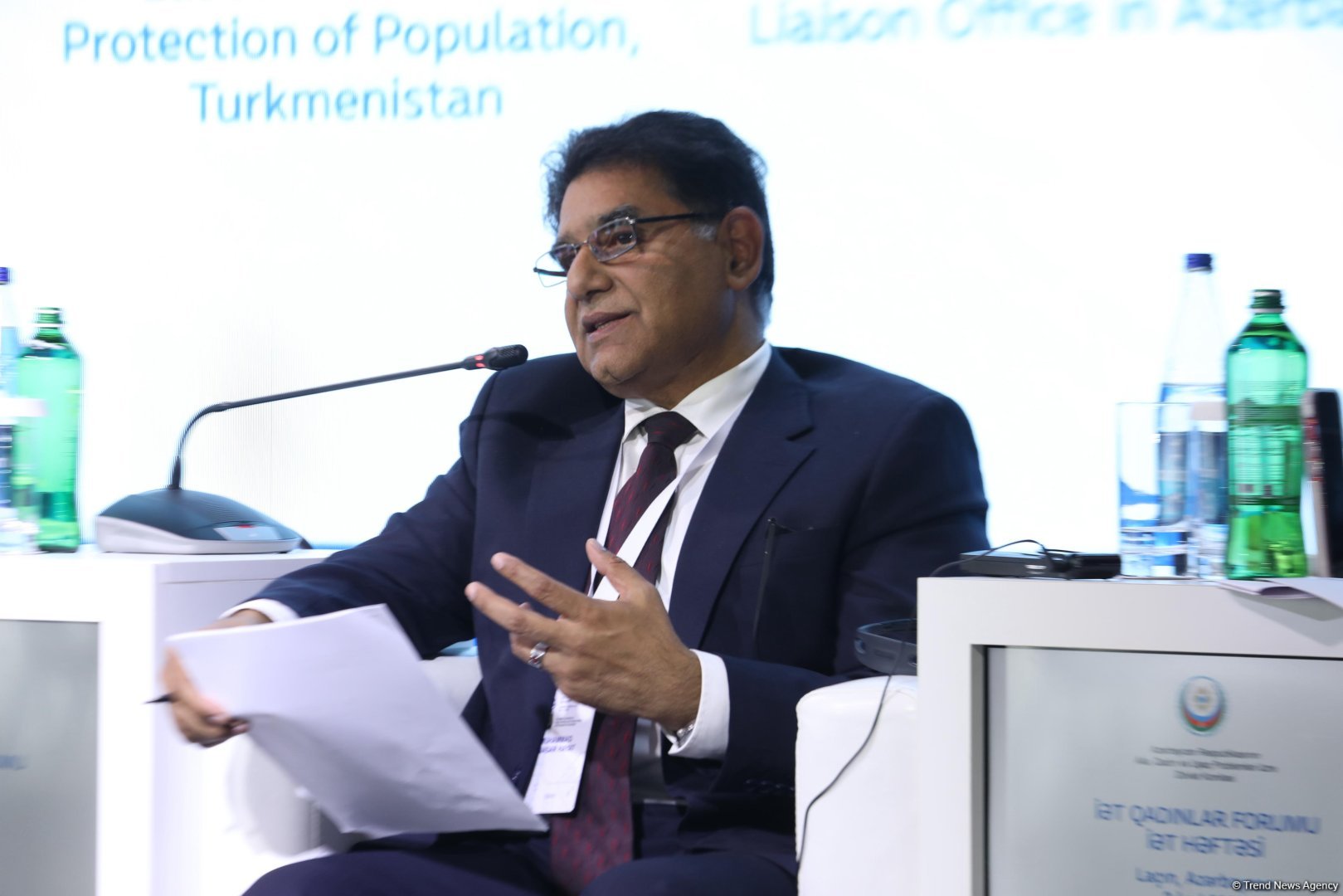LACHIN, Azerbaijan, July 2. We definitely must consider agricultural issues if we are talking about sustainable cities, Representative of the Food and Agriculture Organization (FAO) of the United Nations in Azerbaijan Nasar Hayat said at a panel session themed "The Role of Women in Urban Development" that has been held as part of the Economic Cooperation Organization (ECO) Women's Forum in Lachin, Trend's correspondent sent to Lachin reports.
Hayat noted that 56 percent of the world's population lives in urban areas; however, a very large part of them are consumers, and it is namely these consumers who can play a major role in reducing carbon emissions into the atmosphere.
"Urban planning is important here. FAO believes that not only women should participate in urban planning, but also other stakeholders. Naturally, FAO launched the 'Green Cities' initiative in 2020 on this issue. Currently, this initiative is being implemented in about 100 cities around the world, and by 2030, we would like this initiative to be implemented in at least 1,000 cities around the world.
The evolution of agronomy is inextricably linked to
urbanization. Within this framework, Azerbaijan exemplifies no
deviation. The pivotal influence of female leadership attributes
within the food system is paramount, and this significance is
poised to persist moving forward. Achieving sustainable
urbanization necessitates a strategic approach to mitigating
disparities between rural and urban ecosystems," he said.
Hayat articulated that facilitating agrarian stakeholders' ingress
to alimentary marketplaces in rural locales signifies the
advancement of the economy in its entirety.
"It is evident that female stakeholders are instrumental in
facilitating urban resilience strategies in response to climate
variability." In this context, leveraging indigenous
epistemologies, female practitioners in agronomy advocate for
enhanced sustainability paradigms. At present, the FAO has
initiated a comprehensive framework aimed at enhancing agricultural
sustainability and optimizing food production capacities at the
grassroots level. The bioavailability of nutrients in food matrices
ought to be optimized. The quantum of horticultural output
necessitates augmentation for domestic units, particularly at the
cucurbitaceous tier," he elaborated.
Stay up-to-date with more news on Trend News Agency's WhatsApp channel







